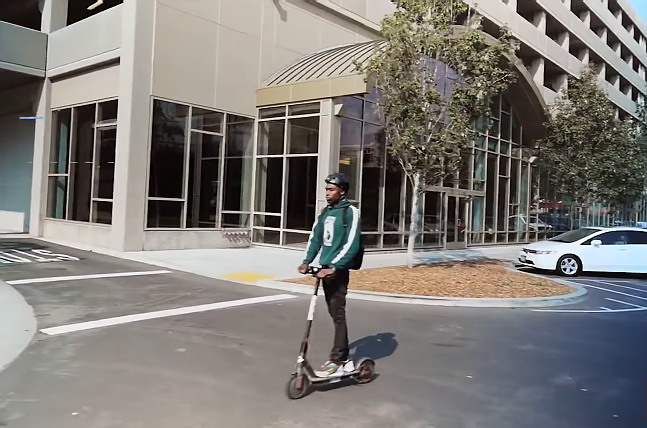Electric Scooters – A Green Solution For Urban Mobility

Today’s cities suffer the most due to the very large number of vehicles with internal combustion engines on the road producing a huge amount of greenhouse gas emissions that affect both the people living in the city and the environment.
Using your conventional car to go to work or to travel the city for shopping, will only add to the huge amount of air pollution produced daily in the town, and will also consume a lot of time due to traffic jams during peak hours.
How To Improve Urban Mobility Using Electric Scooters?
Recent studies about urban mobility are showing that people mostly travel individually in the city (especially when going to work) and this activity is a big time consumer, because the average speed at which a car can travel in the city is somewhere around 15 km/h (9 mph).
People using the subway, have to share the space with many others, and they also spend a lot of time traveling for short distances (10 km or 6 miles on average) just to go to work and back home.
Electric scooters could be a viable solution for the urban mobility because escooters are less affected by traffic jams, they don’t release harmful emissions in the environment, and the running costs are much smaller compared to a conventional car.
The UK Government Favors Escooters
The UK Government considers that there are positive benefits of the current crisis (Covid-19) due to the reduced traffic that improved air quality in cities.
The government wants to preserve this cleaner air by promoting a 2£ billion package to boost cycling and walking.
This way, escooters will become legal in the UK starting next month (June 2020).
The trials for escooters will also be extended from local authorities to every region in the country.
The trials will help the government assess the safety benefits together with their impact on public spaces.
The government also wants to see electric scooter rental schemes up-and-running in cities as quickly as possible.
With these green measures, the government wants to reduce car use on shorter journeys and also to take some of the pressure off the buses.
What Are The Benefits Of Using Electric Scooters?
If you don’t rely on your personal car to go to work or school, you have about several options to choose from depending on the distance you have to travel from home to your workplace.
Traveling On Short Distances (up to 5 miles)
If you travel on short distances you can use the bus, a bike or an electric scooter.
Using the bus will cost you some money each day, and will take at least 30 minutes.
If you use a bike, you can travel quickly and with no costs, but once you get to work, you have to store and lock the bike.
However, you may arrive at work or school full of sweat.
Using an electric scooter will be faster than walking, faster and cheaper than the bus, and more convenient than a bike.
Traveling On Longer Distances (up to 10 miles)
If you have to travel longer distances, you can use the bus, the subway, a bike or the escooter.
The bus will cost you even more and will take over an hour to travel from home to school or workplace.
The bike will consume a lot of energy but will be free and fast.
The escooter seems to be the only green vehicle that can take you there in a pretty short time and without becoming sweaty.
A single battery charge provides a range of about 18 miles, and this means that you have to know in advance the distance that you have to travel to work and back home, to understand if the electric scooter can take you there and back.
Using your personal car will be the worst solution in this case because you will waste time sitting stuck in traffic, the car will pollute the air in the city, and the travel itself will cost you much more.
If scooters replace cars that could be very beneficial for the environment and will ease the traffic in the city (less traffic congestion and fewer emissions).
Conclusion
Even if there are e-scooters that provide a longer range, these vehicles are not very practical on very long distances (over 10 miles), however, they can become very useful in underserved and far away neighborhoods.







